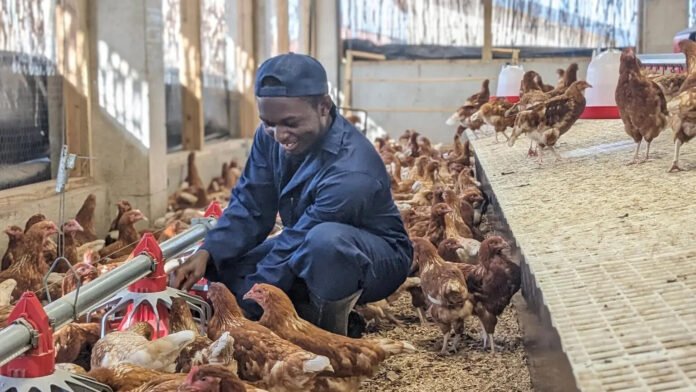Like all vertebrates, poultry animals like chickens follow a circadian rhythm controlled by the natural light and dark cycle. They are most active and feed during the day, while they rest longer during the night.
When building a commercial poultry farm, factors like feed quality, housing conditions, and disease control are often prioritized. However, noise pollution, an important factor, is frequently overlooked.
Poultry, especially in flocks, tend to be noisy animals. A past study revealed that chickens can tolerate noise levels below 85 dB, which is equivalent to the sound of a moving diesel truck.
Anything beyond that level is considered noise pollution and can negatively impact the well-being and productivity of the animals.
As poultry farms in the country become more industrialized, noise pollution synchronously increases. Noise can come from machinery, vehicles, human activity, and other animals.
Poultry animals are sensitive to their environments. Another study once showed that noisy ventilation fans and operational machines in slaughterhouses increased plasma corticosteroids, cholesterol and total protein in animals.
Other health concerns that may come about from noise pollution include:
- Stress and Anxiety – Increased behaviours of feather pecking, cannibalism and reduced feed intake
- Reproductive Issues – Irregular laying patterns, reduced egg production and lower egg quality
- Growth and Development – Stunted growths and developmental delays
- High mortality rates – Noise pollution may cause panic which leads to injuries and even deaths due to trampling
A successful poultry farm is premised on happier and healthier animals, both psychologically and physically. Here is a list of a few steps to ensure that the farm’s noise level is at an acceptable level.
Poultry farming in Kenya – How Leah makes Ksh. 120,000 per month
- Identify all sources of noise pollution within your farm environment.
- Establish the farm away from noisy areas such as industrial areas, rail yards, airports and stone quarries
- Maintain farm machinery and ventilation farms to ensure they do not produce excess noise.
- Muffle noisy equipment.
- Purchase a machine that produces the least noise possible.
The pros of following this regimen far outweigh the cons from a business perspective. Both the poultry and the farmer gain, creating a win-win situation. Just as humans appreciate calm environments to be more productive, so do poultry birds.








